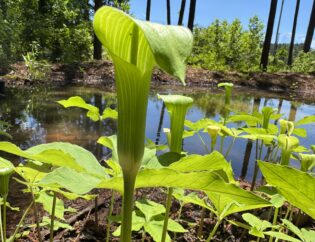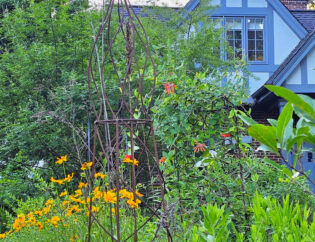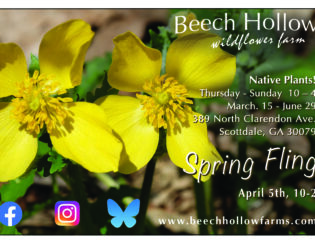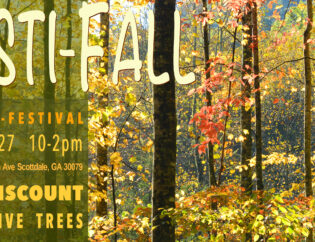March winds, April showers, May flowers...here are a few of the blooms we have seen so far this spring, first a few ephemeral flowers:
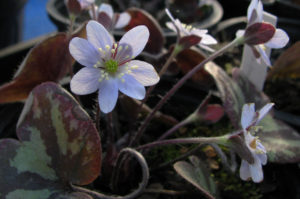 In our Georgia forests, spring ephemerals are plants that have a light maximizing strategy. While the tree branches are still bare in the very early spring, during March and April, these plants make the most of the sunlight hitting the forest floor before our magnificent tree canopy leafs out and swallows the sun whole. They hurry up and make food while the sun is shining...by the time the canopy closes down, their seeds are ripening. Like right now. Above and on the right, Hepatica nobilis, or Round Leaf Hepatica, is one of several ephemerals that we find growing on our north facing bluffs. It bloomed in the greenhouse in March, and Jeff got some great pictures of both the flowers above, and the seeds developing, below, in early April.
In our Georgia forests, spring ephemerals are plants that have a light maximizing strategy. While the tree branches are still bare in the very early spring, during March and April, these plants make the most of the sunlight hitting the forest floor before our magnificent tree canopy leafs out and swallows the sun whole. They hurry up and make food while the sun is shining...by the time the canopy closes down, their seeds are ripening. Like right now. Above and on the right, Hepatica nobilis, or Round Leaf Hepatica, is one of several ephemerals that we find growing on our north facing bluffs. It bloomed in the greenhouse in March, and Jeff got some great pictures of both the flowers above, and the seeds developing, below, in early April.
An early spring favorite of mine is the Bloodroot, Sanginaria canadensis, this plant was blooming on March 22nd:
 The Bloodroot seed pods have already ripened and split, to be dispersed across the forest floor by ants.
The Bloodroot seed pods have already ripened and split, to be dispersed across the forest floor by ants.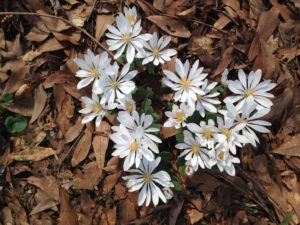 Bloodroot and many of the forest ephemerals in Georgia have a tasty ant treat called an eliasome attached to the end or side of the seed. The eliasome provides lipids and proteins to the ant, which carries the seed on the way back to it's nest. In a perfect world the treat is consumed and the ant drops the seed. That is when the plant's purpose of colonizing the world is accomplished.
Bloodroot and many of the forest ephemerals in Georgia have a tasty ant treat called an eliasome attached to the end or side of the seed. The eliasome provides lipids and proteins to the ant, which carries the seed on the way back to it's nest. In a perfect world the treat is consumed and the ant drops the seed. That is when the plant's purpose of colonizing the world is accomplished. 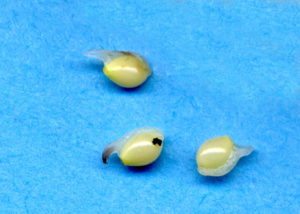 The strange, waxy-looking ridge off to the side of each of the three Bloodroot seeds on the left is the eliasome.
The strange, waxy-looking ridge off to the side of each of the three Bloodroot seeds on the left is the eliasome.
Some of the earliest spring ephemerals such as Trout Lilies pull all their resources from the plant leaves and disappear from view entirely by the end of May, but others, such as Bloodroot and many Trillium, leave their beautiful leaves up through most of the year. It seems to me that many of the ephemerals are also very long lived. I have had a patch of Bloodroot in my garden for somewhere around 20 years, it would still be ten feet across if I had not thinned it out. Bloodroot leaves are pictured below. It's a good thing they are long lived, the seeds can take a year to germinate, and three to four years to be mature enough to bloom.

